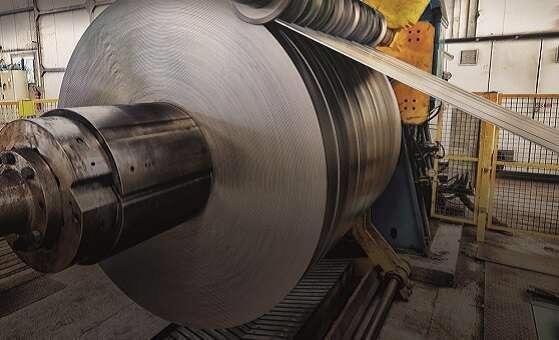From the robots revolution in the manufacturing process to a drop in quality of raw materials from certain sources, present-day industry has never been a more challenging place to work. Yet, it is more interesting and exciting than ever.
This article outlines five areas that keep Hitachi High-Tech motivated; the highs and lows that are impacting the way the technology is developed to ensure a fruitful future for those working with metals or in the metals industry.

Image Credit: Hitachi High-Tech Analytical Science
3D Printing in Metal
3D printing is one technology that is well and truly established and going nowhere: the ability to ‘print’ in metals is accelerating far beyond prototype components and into the area of finished metal components that have the potential to fail.
Hailed as the new fabrication technique, 3D printing is a disruptive technology that will alter conventional manufacturing methods in a truly exciting way. Hitachi High-Tech has worked with the metals industry for several years and welcomes advances in technology.
In the future, Hitachi High-Tech believes that the analysis of finished products will be relatively simple. However, it’s the testing of the raw materials that could make analyzers the most valuable tools.
Raw materials can include aluminum, chrome, cobalt, copper, stainless steel, titanium and tungsten. But in order to use any of these, they must firstly exist as pure elements or alloy powder. This ‘powder’ could be tested with an XRF (X-ray Fluorescence) metals analyzer to ensure a suitable quality needed to turn it into a critical application component.
On the other hand, stationary spark optical emission spectrometers (OES), like the OE750 and OE720 from Hitachi, can be employed to test powders utilizing a re-melting furnace. This offers the benefit of analyzing C, P, S, B and N (if powder is nickel, cobalt or steel based), which XRF machines can’t analyze. WDXRF and combustion analyzers are another alternative, but these can be up to three times more expensive than the OE750, for instance.
Metals Analysis and Big Data
Recently data has emerged as a key resource for businesses, and in the last decade, it has been no different for the metals industry. While investment has been turned into process control and optimization, the industry has for many years trailed behind sectors such as banking and media in its acceptance of new digital technologies.
However, with innovations in analytics, mobile solutions and automation delivering significant gains, the pace is now picking up. For Hitachi High-Tech, it means adapting to maintain pace and keep up with the speed, simplicity and convenience of a metals analyzer that enables a member of staff to take thousands of readings in a working day.
Data and information are now a crucial part of a complete metals analysis ‘toolkit.’ Whether it’s through the IoT, the device being connected to the cloud or installed within the instrument itself.
Why Accuracy Matters
As competition increases globally, or as is the present case scenario, as material shortages occur, there is little doubt that the quality of materials from certain areas will decrease. In a number of countries, manufacturers are offered huge tax advantages when adding low-cost elements like boron to materials such as steel.
One of the world’s biggest alloyed steel exporters is supported by its government with a tax reduction offering between three and nine percent. So, it is important to complete the incoming inspection on the raw material being received because while someone else might be getting a tax break, companies need to ensure that they are not paying the cost.
For such applications, either a handheld XRF analyzer like the X-MET8000 or a handheld laser analyzer like the Vulcan would be suitable.
However, when greater precision and accuracy are required, Hitachi High-Tech’s stationary optical emission analyzers, like the OE720 or OE750, would be the premium choice to ensure the best price-quality ratio for incoming raw materials validation.
Rise of the Robots
Robotics and artificial intelligence (AI) are at the center of a new age in manufacturing, the move towards digitizing industry. Robots and AI already take a key and central role in numerous industries – boosting accuracy and consistency, reducing throughput and improving product quality.
The rise of the ‘cobots,’ 24/7 cloud robotics and factory floor and laboratory robotics are all trends emerging in metal manufacturing that show how things are changing.
Hitachi High-Tech has been expanding its research into ways to help its customers with connectivity and automation to support production optimization. While a walking, talking robot analyzer is still some way off, Hitachi can explain more about the devices that can be immediately integrated into the production process.
Materials and their Impact on the Environment
Common phrases like ‘green’ and ‘environmentally friendly’ are ubiquitous nowadays, and industry has never been more aware of these issues. While recycling scrap metal is a more environmentally friendly practice than extracting, processing, and refining raw materials, it’s not without drawbacks.
Even very small amounts of additives or tramp elements can result in critical issues later down the line and significantly impact the quality and usability of metal.
In order to produce high-quality, reliable products in which the materials behave as expected, it’s critical to control and measure tramp and trace elements in incoming raw materials - something that can only be achieved with the appropriate equipment.
Hitachi High-Tech’s latest spark OES analyzers, the OE750 and OE720, could be the answer to such a problem. What’s more, these devices offer future flexibility.
As metals analysis experts, Hitachi High-Tech’s range of LIBS, OES and XRF means that its PMI toolbox of metal composition testing analyzers could be the perfect solution.

This information has been sourced, reviewed and adapted from materials provided by Hitachi High-Tech Analytical Science.
For more information on this source, please visit Hitachi High-Tech Analytical Science.